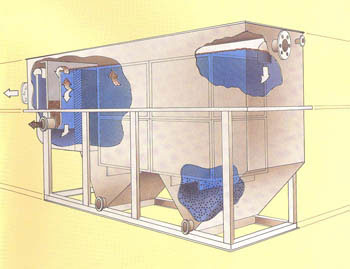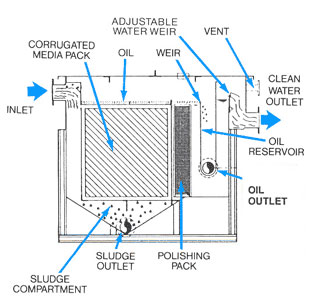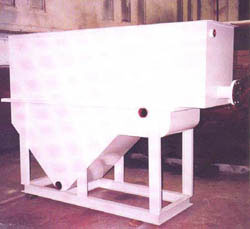 National and International regulatory agency guidelines are increasingly stringent when dealing with oil discharge limits and are driving the need for efficient, cost effective, oil/water separation technologies. The OCS Series coalescence oil/water separators have been designed to meet the need dealing specifically with free and dispersed non-emulsified oil. Free and dispersed oil requires gravity coalescing to separate and the PCS OCS separator is designed for this application. These gravity separators accelerate the process of which oil and water do naturally – separate. It is done with no moving parts and is based on principles as consistent as gravity and buoyancy.
National and International regulatory agency guidelines are increasingly stringent when dealing with oil discharge limits and are driving the need for efficient, cost effective, oil/water separation technologies. The OCS Series coalescence oil/water separators have been designed to meet the need dealing specifically with free and dispersed non-emulsified oil. Free and dispersed oil requires gravity coalescing to separate and the PCS OCS separator is designed for this application. These gravity separators accelerate the process of which oil and water do naturally – separate. It is done with no moving parts and is based on principles as consistent as gravity and buoyancy.
The Pollution Control Systems OCS Series oil water separator with its coalescence principle of operation offers the user a number of advantages in treating free and dispersed oil.
- Capable of removing oil droplets from 149 microns down to and below 20 microns
- Compact design conserves valuable floor space
- Low maintenance and operating costs
OPERATING PRINCIPLES
 The operation of the coalescence type separator is based on the use of surface areas that reduce the distance an oil droplet must travel before it reaches a collection surface. The coalescence plates are constructed of materials that are hydrophobic (water repelling) and oleophilic (oil attracting). When the oil droplet comes in contact with the plate, it reaches a zone of zero velocity and adheres to the surface. The coalescence surfaces multiply the effectiveness of the natural action of oil and water to separate.
The operation of the coalescence type separator is based on the use of surface areas that reduce the distance an oil droplet must travel before it reaches a collection surface. The coalescence plates are constructed of materials that are hydrophobic (water repelling) and oleophilic (oil attracting). When the oil droplet comes in contact with the plate, it reaches a zone of zero velocity and adheres to the surface. The coalescence surfaces multiply the effectiveness of the natural action of oil and water to separate.
As the media plates become coated with continuously agglomerating oil, the oil begins to form droplets. These droplets then coalesce or migrate upward. The media plates are set at steep angles with respect to horizontal. This creates a condition that accelerates the vertical movement of the oil. The oil coating the media surface accumulates at the top edge of the media where it detaches as a droplet and floats to the surface of the separation chamber. Once it breaks away from the media, the oil then resides on the surface of the water. There are now two zones of liquid in the separator – oil and water.
The oil that has separated overflows a fixed weir into a collection chamber for subsequent removal. The clear water underflows the oil and is discharged from the system on a continuous basis.
 Simultaneously with the oil/water separation, solids settle out through the spacing of the media pack matrix. They are collected in a hopper-bottomed sludge chamber below the coalescence media pack. The settled solids are stored here for disposal.
Simultaneously with the oil/water separation, solids settle out through the spacing of the media pack matrix. They are collected in a hopper-bottomed sludge chamber below the coalescence media pack. The settled solids are stored here for disposal.
PVC is the standard coalescence media pack material. It can be used in flows with temperatures up to 140° F continuously and 160° F intermittently. The media is enclosed in a stainless steel framework for easy accessibility.
The performance of the oil/water separator can be enhanced with the use of optional polishing pack. These packs can bring oil removal rates down to 10 ppm or less, depending on the application. It is located in the separator following the coalescence media pack with the entire flow passing through the matrix structure of polishing pack material. The polishing pack is enclosed in a stainless steel framework for easy accessibility to the interior of the system.
COALESCENCE MEDIA PACK